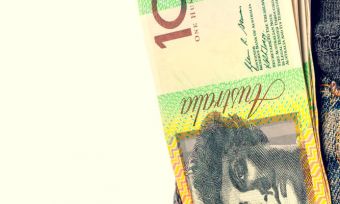Want to know the best way to spend your tax refund? Here are my top five tips.
You might have until 31 October to submit your tax return if you are completing it yourself but if you’re expecting a refund then chances are you won’t be waiting that long! According to the Australian Taxation Office, more than 10.83 million individual 2021 refunds had been issued as of 30 June 2022, totalling more than $32.04 billion with an average refund of $2,956. I don’t know too many people who wouldn’t be happy with having close to $3,000 hit their bank account.
No matter the amount, if you are likely to get a tax refund this year you will need to make a decision about how to best spend it. To help with this, Canstar has crunched the numbers on five different examples to show you how much bang you could get for your refund buck – you could potentially even double your money. Of course, you need to be mindful that these are based on hypothetical scenarios and in some cases past performance but it hopefully gives you some food for thought.
1. Pay off your credit card
Credit card debt can be one of the most expensive types of debt. The average purchase rate based on unsecured personal credit cards on Canstar’s database is 16.89%pa. So if you owe money on your credit card it can make good financial sense to use your tax refund to knock off some of that debt.
Let’s say you have an outstanding credit card debt of $3,891 but are only making the minimum payments. It would take you 25 years and six months to clear your debt and you’d have paid $7,296 in interest.
Whack the $3,000 refund onto your credit card and you’d potentially save $6,776 in interest, even if you stuck to simply making the minimum repayments after that. You could potentially save even more by making higher repayments.
Paying off the average credit card debt using minimum repayments
← Mobile/tablet users, scroll sideways to view full table →
| Average Debt: $3,891^ Average Purchase Rate: 16.89% |
Total interest costs | Time to repay |
|---|---|---|
| No extra repayment | $7,296 | 25 years 6 months |
| Extra repayment of $3,000 | $520 | 5 years 11 months |
| Difference | $6,776 | 19 years 7 months |
Source: www.canstar.com.au – 9/08/2022. Calculations assume a credit card with the average purchase rate and median minimum repayments of 2% or $20 (whichever is greater), based on unsecured personal credit cards on Canstar’s database; excluding interest-free cards. ^Average credit card debt per RBA Credit Card Statistics (June-2022; original terms), and assumes 36% of personal credit card accounts are revolving a balance and therefore accruing interest, based on the Canstar 2021 Customer Satisfaction Survey (n=5290). Extra repayment scenario assumes $3,000 repayment is made at start of schedule and then minimum repayments are made thereafter.
2. Add the refund to your mortgage
Another option to consider is adding the refund into your home loan either using a redraw facility or offset account. This is a great way to save interest on your loan and you can still access the money if you need it. Plus, you’ll be building up a buffer which can be helpful with rates rising. As the table below, compiled by Canstar, shows by adding $3,000 into a $500,000 home loan you could potentially save $7,276 on a 30-year loan.
Impact of putting $3,000 into your home loan offset account/redraw facility
← Mobile/tablet users, scroll sideways to view full table →
| Offset amount / Extra repayment at start of loan | Total interest paid over 30 year loan term |
|---|---|
| None | $372,892 |
| $3,000 | $365,616 |
| Difference | $7,276 |
Source: www.canstar.com.au – 9/08/2022. Based on the average owner occupier variable rate available for a loan amount of $500,000, 80% LVR and principal & interest repayments, excluding introductory and first home buyer only loans, of 4.13%. Calculations assume a total loan term of 30 years, and that the balance in the offset account is held constant at the specified amount for the entire loan term or that the extra lump sum repayment of the specified amount is made at the start of the loan term.

3. Invest in an Australian shares ETF
You could also consider using your tax refund to start investing using an Exchange Traded Fund (ETF) ETFs are a pooled investment option that can be traded on the sharemarket. They tend to be low-cost and most are designed to move in line with an index. This may be the riskiest option though as the money is subject to the volatility of the sharemarket.
Australian shares have returned 8.03%pa (including dividends reinvested) over five years to the end of July 2022 and 9.44%pa over 10 years, so I used the compound interest calculator on Moneysmart to find out how a $3,000 tax refund could potentially grow over various periods. As the table shows you could potentially more than double your money in 10 years.
Investing $3,000 in an ETF
← Mobile/tablet users, scroll sideways to view full table →
| Period | Return | Balance |
|---|---|---|
| 5 years | 8.03% | $4,414 |
| 10 years | 9.44% | $7,394 |
Source: Moneysmart compound interest calculator. Returns are based on the total return of the S&P/ASX 200 Index over the past five and 10 years (effective to 29 July 2022).
4. Put the money into your super fund
Another option is adding it to your super fund. I asked Canstar to crunch the numbers and they show that a 40-year-old who currently has $76,084 in their super and adds a $3,000 refund to their fund could have $3,407 more in their super at retirement. Keep in mind, though, that adding the money into your super will mean that you can’t access it until you retire.
Impact of putting $3,000 into your super
← Mobile/tablet users, scroll sideways to view full table →
| Start Assumptions Age: 40 Gross Annual Income: $77,948 Balance: $76,084 |
No extra contribution | $3,000 non-concessional contribution |
|---|---|---|
| Account balance at retirement | $301,762 | $305,170 |
| Difference to base scenario retirement balance | – | $3,407 |
Source: www.canstar.com.au. Prepared on 9/08/2022. Scenario begins at the start of the 2022-23 financial year and is based on a 40-year-old with a starting balance of $76,084 (per APRA Annual Superannuation Bulletin), starting gross annual income of $77,948 (per ABS Characteristics of Employment – median employee earnings), and retiring at age 67. SG Contribution amounts per Government announced rates are assumed to be paid into superannuation fund quarterly. Employer contributions are assumed to be taxed at 15%. Net investment returns assumed to be 4.34% p.a. based on the average annual 5-year return of balanced investment options available for a 40-year-old on Canstar’s database (with returns effective to 30 Jun 2022). Average life and TPD insurance premium of $359.15, is assumed charged at the end of each year based on products available for a 45-year-old on Canstar’s database. Annual income and insurance premiums are assumed to increase with inflation each year. Inflation is assumed to be 2.5%p.a. due to the rising cost of living (CPI Inflation) plus a further 1.5%p.a. due to the rising community living standards. End balances at retirement are shown in “today’s dollars”, i.e. they have been adjusted for inflation. Please note all information on income and superannuation performance returns are used for illustration purposes only. Actual returns and the value of your investment may fall as well as rise from year to year; this example does not take such variation into account. Past performance is not a reliable indicator of future performance.
5. Spend it!
It’s probably not something I would normally recommend but with all the curveballs thrown our way over the past few years, a little splurge might be welcome. There are some caveats – I’d only do this if you have no debt, have an emergency fund in place and can afford to spend the money. If you take this route try to buy Australian-made products. And, if you use the cash for a getaway then take a domestic holiday rather than heading overseas.
Cover image source: CreativeFireStock/Shutterstock.com
This content was reviewed by Editorial Campaigns Manager Maria Bekiaris as part of our fact-checking process.







Share this article